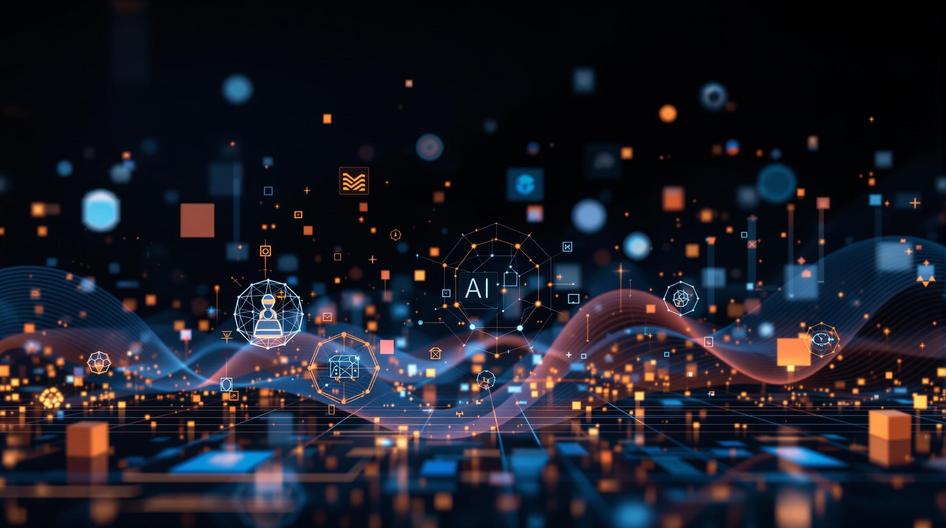
Edge AI Revolution: How Hardware Innovations and Strategic Partnerships Are Reshaping Connected Intelligence
Remember when edge computing was just another buzzword floating around tech conferences? Those days are over. Edge AI has quietly moved from PowerPoint presentations to factory floors, retail warehouses, and even satellites orbiting Earth. We’re witnessing a fundamental shift in how intelligence gets distributed across our connected world, and frankly, it’s happening faster than most people realize.
The race to bring AI processing closer to where data originates is creating some fascinating developments. New hardware breakthroughs, massive strategic partnerships, and use cases that would’ve seemed like science fiction just a few years ago are now becoming standard operating procedure. What does this mean for developers, investors, and the broader tech ecosystem? Let’s dig in.
Processing Power Gets Personal
Here’s the thing about edge computing: it’s all about cutting out the middleman. Instead of sending data on a round trip to distant cloud servers, you process everything right where it’s generated. For applications like real-time video analysis, robotics, and environmental monitoring, this isn’t just convenient. It’s absolutely critical.
Take the NRU-160-FT Series that just hit the market. Built around NVIDIA’s Jetson Orin NX or Orin Nano System on Module, this fanless, rugged edge AI computer is designed specifically for industrial environments. The specs are genuinely impressive: up to 100 trillion operations per second for AI inference, capable of processing 18 full-HD video streams simultaneously.
Bundled with NVIDIA’s JetPack software stack, the device targets vision-based inspection, robotics control, and autonomous vehicle systems. Its GMSL2 camera interfaces and Power-over-Ethernet connectivity make it perfect for integrating with distributed sensor networks. Think IoT ecosystems that can actually think and respond in real-time.
The Money Talks
While hardware innovation grabs headlines, real market momentum comes from actual deployments. Blaize Holdings just proved this point dramatically by securing massive AI chip contracts worth $56 million and $120 million in Asia, plus a significant partnership in Saudi Arabia.
These deals surpass the company’s entire historical revenue. That’s not just growth, that’s validation that enterprises are moving beyond pilot programs into full-scale operationalization. The announcements at GITEX signal something important: global companies aren’t experimenting with edge AI anymore. They’re buying it at scale.
What’s driving this shift? Cost reduction, improved performance, and the growing realization that AI integration can’t wait for perfect cloud connectivity. Industries from manufacturing to finance are discovering that edge processing isn’t just nice to have. It’s becoming a competitive necessity.
Machines Learn to Smell
Now here’s where things get really interesting. The partnership between Ainos and NEXCOM is commercializing something that sounds straight out of a sci-fi novel: AI-powered scent recognition.
The AI Nose technology combines specialized scent sensors with language models trained to interpret olfactory signals. This enables automation systems to recognize and respond to chemical signatures in real-time. We’re talking about environmental monitoring, hazardous material detection, and quality control in food and pharmaceuticals, all managed directly at the edge.
Think about the implications. Instead of shipping samples to labs and waiting for results, industrial systems could detect contamination, gas leaks, or quality issues instantly. For sectors like petrochemicals or food processing, this could revolutionize safety protocols and operational efficiency.

Workers Get Smarter Tools
Edge AI isn’t just about massive industrial deployments. It’s also transforming the tools that frontline workers use daily. Honeywell’s latest mobile computing innovations illustrate this trend perfectly.
Their new CT70 handheld computer and AI assistant target retail, logistics, and warehouse environments. Enhanced with machine vision and optimized for 5G connectivity, these devices let users track inventory, make decisions, and automate repetitive tasks with dramatically improved speed and accuracy.
For warehouse managers and logistics coordinators, this represents a significant productivity multiplier. The integration of AI into handheld devices could reduce operational errors while accelerating throughput. In industries where margins are tight and efficiency is everything, these improvements translate directly to competitive advantage.
Intelligence Reaches Orbit
If you want to see how far edge AI can travel, look up. Literally. Traditional Earth observation satellites generate massive volumes of data but often downlink raw information for ground-based analysis. That’s changing fast.
Solutions like NuPod combine high-throughput storage with advanced edge inferencing and machine learning capabilities. Satellites can now process, filter, and analyze imagery and sensor data directly on orbit.
This means rapid insights for disaster response, security monitoring, and resource tracking. Instead of waiting hours or days for ground-based analysis, operators can react to mission-critical events in near-real time. For industries dependent on timely satellite data, this could be transformative.
What’s Next for the Edge Revolution?
The convergence of powerful edge hardware, strategic partnerships, and novel sensing capabilities points to a fundamental shift in how intelligence gets distributed. As machines become more capable of perceiving, interpreting, and acting autonomously at the edge, cloud computing’s role is evolving from central authority to collaborative partner.
For crypto and blockchain developers, edge AI opens interesting possibilities for decentralized computing networks and tokenized processing power. Could we see blockchain protocols that reward edge AI computation? The intersection of these technologies could create entirely new economic models.
Developers and engineers face both opportunities and challenges. The rapid evolution of edge AI platforms means constantly adapting to new capabilities and integration patterns. Business leaders need to evaluate how edge intelligence fits their operational strategies and competitive positioning.
The security implications alone are worth watching closely. As more processing happens at the edge, traditional cybersecurity approaches need updating. Distributed intelligence creates new attack surfaces but also new defensive possibilities.
For investors, the edge AI market represents significant growth potential across hardware, software, and services. But like any emerging technology space, distinguishing between genuine innovation and hype requires careful analysis.
The edge AI revolution isn’t coming. It’s here. The question isn’t whether this technology will reshape industries, but how quickly organizations can adapt and capitalize on the opportunities it creates. Based on the deals, partnerships, and innovations we’re seeing, that timeline is accelerating faster than most people expected.
Sources:
- “NRU-160-FT Series | NVIDIA Jetson Orin NX/Nano fanless edge AI computer with GMSL2 or PoE+ connectivity,” Unmanned Systems Technology, Oct 16, 2025
- “Blaize Holdings (BZAI) Soars on AI Chip Deals and Partnerships – What’s Next for This Edge AI Stock?” ts2.tech, Oct 15, 2025
- “AI Nose integrated into NEXCOM edge platforms — Ainos expands SmellTech-as-a-Service worldwide,” Stock Titan, Oct 14, 2025
- “Honeywell Launches AI Tools to Boost Workforce Productivity,” Bisinfotech, Oct 17, 2025
- “Efficient Edge Processing with Integrated Storage for Earth Observation Missions,” Payload Space, Oct 15, 2025





























































































